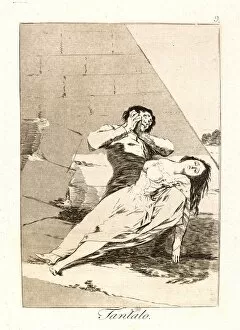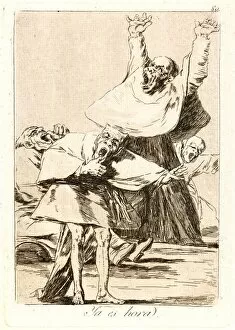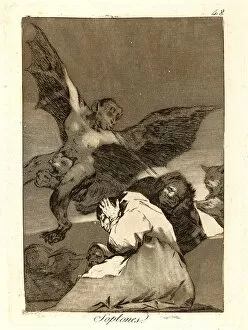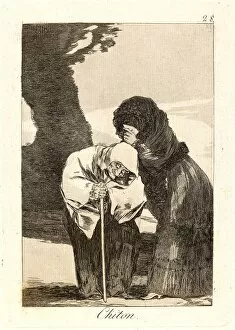X 591 Collection
"X 591: A Glimpse into Francisco de Goya's Artistic World" Step into the captivating world of Francisco de Goya, a Spanish artist who lived from 1746 to 1828
All Professionally Made to Order for Quick Shipping
"X 591: A Glimpse into Francisco de Goya's Artistic World" Step into the captivating world of Francisco de Goya, a Spanish artist who lived from 1746 to 1828. His works are filled with emotion and thought-provoking imagery that continues to captivate audiences today. One such piece is "Sopla" (Blow. ), created between 1796-1797 as part of his series called Los Caprichos. This artwork depicts a figure blowing on something, perhaps symbolizing the power of words or ideas spreading like the wind. In "Tal para qual" (Two of a kind. ), also from Los Caprichos, we see two individuals who mirror each other's actions and appearances. It raises questions about identity and conformity in society. Goya's "Ruega por ella" (She prays for her. ) portrays a woman deep in prayer, highlighting themes of faith and spirituality. The delicate brushstrokes evoke a sense of serenity amidst life's challenges. With "Que pico de Oro. " (What a golden beak. ), Goya presents an intriguing image that invites interpretation. Is it an allegory for greed or vanity? The viewer is left to ponder its meaning. "They have flown. " In this piece titled "Volaverunt, " Goya captures birds taking flight, suggesting liberation or escape from confinement. It serves as both literal and metaphorical representation. "The shamefaced one. " Known as "El Vergonzoso, " this artwork delves into human vulnerability and self-consciousness. Through expressive strokes, Goya masterfully conveys complex emotions within his subjects. "Hasta la muerte. " Translated as "Until death, " this work explores mortality and the inevitability of our journey towards the unknown beyond life's boundaries. It prompts introspection on our own mortality. Alphonse Legros' creation titled "The Prodigal Son (Second Plate)" offers a different perspective.












